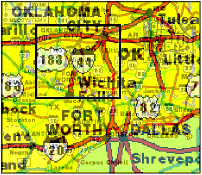A Translucent Zooming Technique

How would you interactively browse a very large display space, for example, a street map of the entire United States? The traditional solution is zoom and pan. To get from a corner in Cambridge, Mass. to a corner in Palo Alto, California, the user would zoom out the Cambridge street map until the entire US fit on the screen, pan it over to center on the San Francisco Bay Area, then zoom in on the Palo Alto street map. But each time a zoom-in operation takes place, the context from which it came is visually lost. A close-up zoom of a street map looks roughly the same, whether in Massachusetts or California. When changing locations, sequential applications of the zoom-in and zoom-out operations may become tedious.
This paper proposes an alternative technique, the macroscope, based on zooming and panning in multiple translucent layers. A macroscope display should comfortably permit browsing continuously on a single image, or set of images in multiple resolutions, on a scale of at least 1 to 10,000.